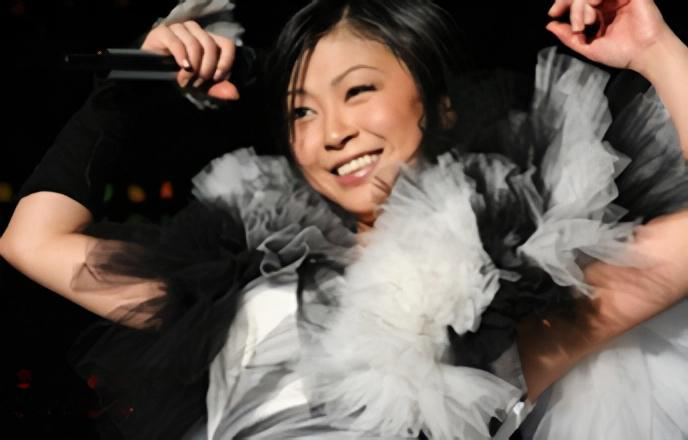|
I'll Be There (Ki-Yo Album)
''I'll Be There'' is the debut album of the Japanese singer Kiyotaka. The album was released by EXPRESS contains 13 songs and 1 hidden track. This album includes his biggest hit single "The Only One", which was used in the Japanese TV drama ''Pure Soul (Kimi ga boku wo wasuretemo)''. Commercial performance The album debuted at No. 7 on the Oricon Weekly Album Chart and became his only CD charted within No. 10 on the Oricon Charts. Track listing #"Opening" #"No No No" #"Lost child" #"Mirage" #"The Only One (Interlude)" #"True To Yourself" #"INSPIRE" #"VANISHING" #"Can You Feel The Same" #You're not alone" #"Dear Friend" #"freedom" #"The Only One (Orchestra Version)" #"Chain of Fools (Hidden Track)" Charts References {{DEFAULTSORT:Ill be there 2001 debut albums 2000s Japanese-language albums EMI Records albums ... [...More Info...] [...Related Items...] OR: [Wikipedia] [Google] [Baidu] |
Ki-Yo
is a Japanese pop singer. Since his debut, Ki-Yo has worked as a singer, composer, lyricist and ambassador of Miyagi Prefecture. He's known as one of the few openly LGBT musicians in Japan. History Early life In 1982, Ki-Yo was born in Sendai, Miyagi. He was musically influenced by Mariah Carey, Stevie Wonder, Aretha Franklin, Akiko Yano, Elton John, Billy Joel, Noriyuki Makihara, Whitney Houston. 2000–2006: debut and career in Japan In 2000, Ki-Yo sent a demo to EMI Music Japan when he visited Tokyo to see a concert by Mariah Carey, and was signed by the label for his debut. On October 22, 2000, his first single "No No No" was released. It was a success, charting No. 45 on the Oricon single weekly chart. On April 18, 2001, "The Only One", his most commercially successful single to date, was released as a third single. It was used in a romantic drama, "Pure Soul ~Kimi ga boku wo wasuretemo~". Eventually, this single charted on the Oricon single yearly chart ... [...More Info...] [...Related Items...] OR: [Wikipedia] [Google] [Baidu] |
J-Pop
J-pop ( ja, ジェイポップ, ''jeipoppu''; often stylized as J-POP; an abbreviated form of "Japanese popular music"), natively also known simply as , is the name for a form of popular music that entered the musical mainstream of Japan in the 1990s. Modern J-pop has its roots in traditional music of Japan, and significantly in 1960s pop and rock music. J-pop replaced '' kayōkyoku'' ("Lyric Singing Music", a term for Japanese popular music from the 1920s to the 1980s) in the Japanese music scene. J-rock bands such as Happy End fused the Beatles and Beach Boys-style rock with Japanese music in the 1960s1970s. J-country had popularity during the international popularity of Westerns in the 1960s1970s as well, and it still has appeal due to the work of musicians like Charlie Nagatani and venues including Little Texas, Tokyo. J-rap became mainstream with producer Nujabes and his work on ''Samurai Champloo'', Japanese pop culture is often seen with anime in hip hop. Other tre ... [...More Info...] [...Related Items...] OR: [Wikipedia] [Google] [Baidu] |
Pop Music
Pop music is a genre of popular music that originated in its modern form during the mid-1950s in the United States and the United Kingdom. The terms ''popular music'' and ''pop music'' are often used interchangeably, although the former describes all music that is popular and includes many disparate styles. During the 1950s and 1960s, pop music encompassed rock and roll and the youth-oriented styles it influenced. '' Rock'' and ''pop'' music remained roughly synonymous until the late 1960s, after which ''pop'' became associated with music that was more commercial, ephemeral, and accessible. Although much of the music that appears on record charts is considered to be pop music, the genre is distinguished from chart music. Identifying factors usually include repeated choruses and hooks, short to medium-length songs written in a basic format (often the verse-chorus structure), and rhythms or tempos that can be easily danced to. Much pop music also borrows elements from other st ... [...More Info...] [...Related Items...] OR: [Wikipedia] [Google] [Baidu] |
EMI Music Japan
, formerly , was one of Japan's leading music companies. It became a wholly owned subsidiary of British music company EMI Group Ltd. on June 30, 2007, after Toshiba sold off its previous 45% stake. Its CEO and president was Kazuhiko Koike. When EMI Music Japan was trading as Toshiba-EMI, it was involved with the production of anime. On April 1, 2013, the company became defunct, following its absorption into Universal Music Japan as a sublabel under the name EMI Records Japan. History The company was founded on October 1, 1960, as . From 1962, it licensed Columbia (UK) titles for release in Japan. After an injection of capital by Capitol EMI, EMI acquired 50% of the company in October 1973, and the name was changed to Toshiba EMI Limited. On October 3, 1994, the equity ratio of the company was changed, in which EMI obtained 55% with Toshiba owning the remaining 45%. On June 30, 2007, Toshiba Corporation sold the remaining 45% stake in the company to EMI, giving EMI full ownersh ... [...More Info...] [...Related Items...] OR: [Wikipedia] [Google] [Baidu] |
Oricon
, established in 1999, is the holding company at the head of a Japanese corporate group that supplies statistics and information on music and the music industry in Japan and Western music. It started as, which was founded by Sōkō Koike in November 1967 and became known for its music charts. Oricon Inc. was originally set up as a subsidiary of Original Confidence and took over the latter's Oricon record charts in April 2002. The charts are compiled from data drawn from some 39,700 retail outlets (as of April 2011) and provide sales rankings of music CDs, DVDs, electronic games, and other entertainment products based on weekly tabulations. Results are announced every Tuesday and published in ''Oricon Style'' by subsidiary Oricon Entertainment Inc. The group also lists panel survey-based popularity ratings for television commercials on its official website. Oricon started publishing Combined Chart, which includes CD sales, digital sales, and streaming together, on December 19, ... [...More Info...] [...Related Items...] OR: [Wikipedia] [Google] [Baidu] |
2001 Debut Albums
1 (one, unit, unity) is a number representing a single or the only entity. 1 is also a numerical digit and represents a single unit of counting or measurement. For example, a line segment of ''unit length'' is a line segment of length 1. In conventions of sign where zero is considered neither positive nor negative, 1 is the first and smallest positive integer. It is also sometimes considered the first of the infinite sequence of natural numbers, followed by 2, although by other definitions 1 is the second natural number, following 0. The fundamental mathematical property of 1 is to be a multiplicative identity, meaning that any number multiplied by 1 equals the same number. Most if not all properties of 1 can be deduced from this. In advanced mathematics, a multiplicative identity is often denoted 1, even if it is not a number. 1 is by convention not considered a prime number; this was not universally accepted until the mid-20th century. Additionally, 1 is the ... [...More Info...] [...Related Items...] OR: [Wikipedia] [Google] [Baidu] |
2000s Japanese-language Albums
S, or s, is the nineteenth letter in the Latin alphabet, used in the modern English alphabet, the alphabets of other western European languages and others worldwide. Its name in English is ''ess'' (pronounced ), plural ''esses''. History Origin Northwest Semitic šîn represented a voiceless postalveolar fricative (as in 'ip'). It originated most likely as a pictogram of a tooth () and represented the phoneme via the acrophonic principle. Ancient Greek did not have a phoneme, so the derived Greek letter sigma () came to represent the voiceless alveolar sibilant . While the letter shape Σ continues Phoenician ''šîn'', its name ''sigma'' is taken from the letter ''samekh'', while the shape and position of ''samekh'' but name of ''šîn'' is continued in the '' xi''. Within Greek, the name of ''sigma'' was influenced by its association with the Greek word (earlier ) "to hiss". The original name of the letter "sigma" may have been ''san'', but due to the complic ... [...More Info...] [...Related Items...] OR: [Wikipedia] [Google] [Baidu] |


